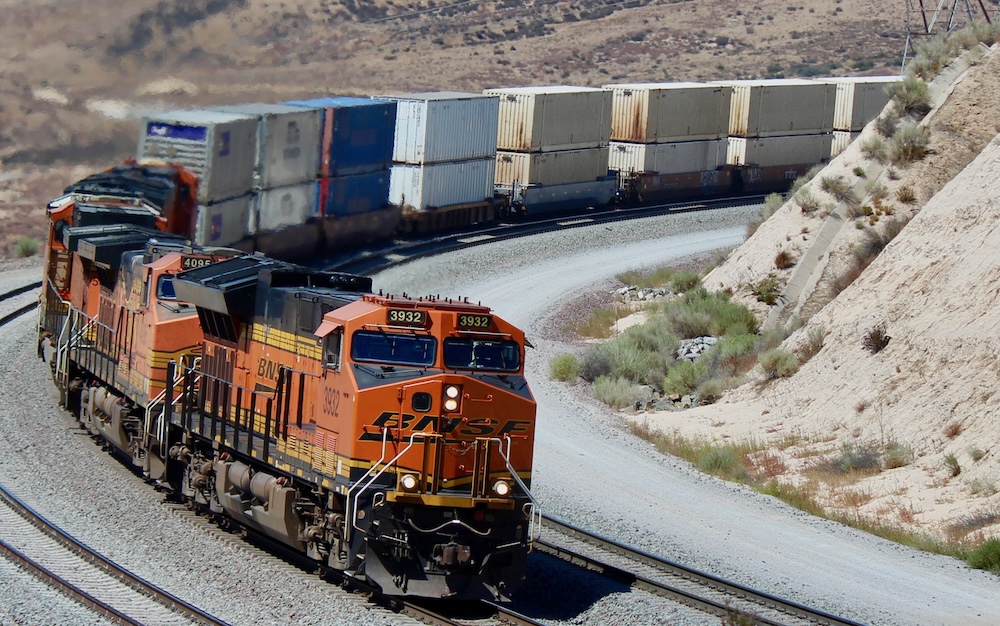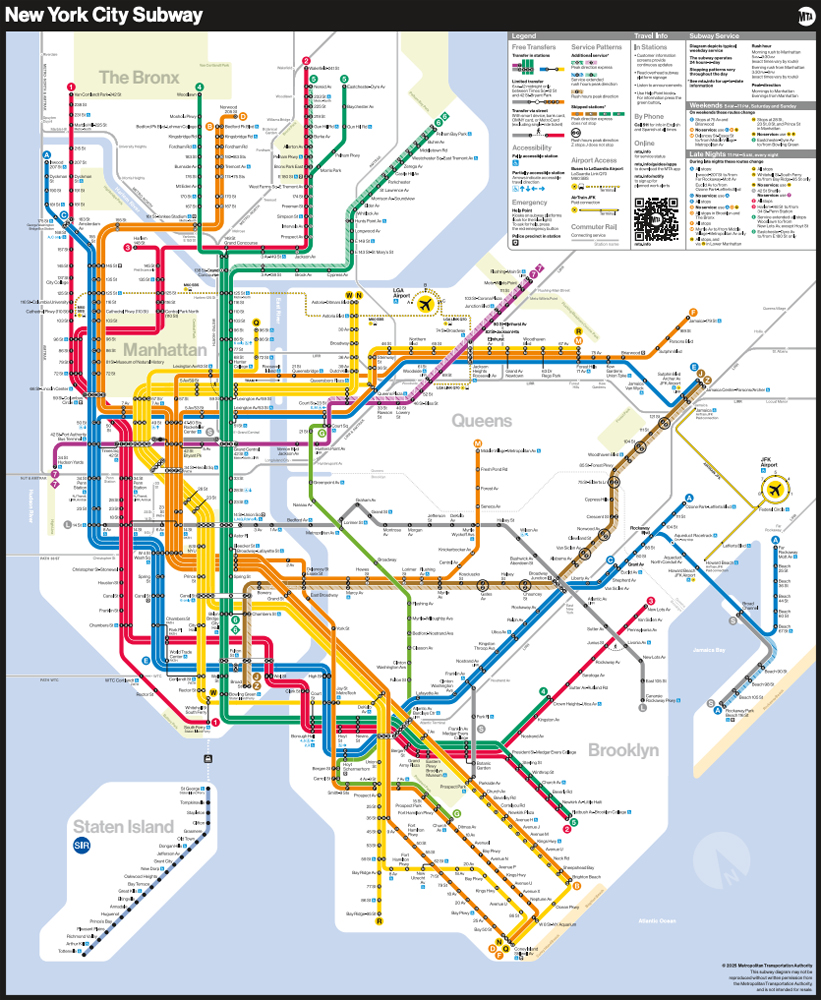
NEW YORK — The U.S. Class I railroads have turned the corner on service and resiliency and are poised for volume growth for the first time in years.
That’s the view of a trio of analysts – Anthony B. Hatch, Rick Paterson, and Larry Gross – who spoke at the RailTrends conference last week.
Paterson, an analyst with Loop Capital Markets who closely follows railroad performance measures, says the railroads passed significant operational stress tests this year thanks to having an adequate number of train crews and locomotives held in reserve.
In the West, BNSF Railway and Union Pacific both bent but did not break under the strain of a surge in international container imports at the ports of Los Angeles and Long Beach. In the East, CSX and Norfolk Southern both bounced back quickly after hurricane strikes.
BNSF has been under intermodal volume pressure for a year, Paterson says, and average intermodal train speed has suffered. But train speeds held up as intermodal traffic hit record levels in October.
Over the summer, BNSF’s focus on improving dwell at its hump and flat-switching yards was successful. “Time will tell, but this looks to me like a structural and sustainable improvement of about 15%,” Paterson says.
Although UP’s intermodal trains speeds hit a six-year low in October, car miles per day increased, indicating that the railroad remained fluid, Paterson says. “What you’re seeing is UP’s buffer strategy at work, where they are finally expecting the unexpected and maintaining reserves of power and crews,” he says.
CSX has had industry-leading operational performance over the last year, Paterson says, and the railroad was able to rebound quickly from the Baltimore bridge collapse in March, a series of hurricanes, and the impact of the East Coast port strike. “You can see the recent fade in velocity as a result, but in absolute terms, the operation has gone from an A to a B-plus,” he says.
Norfolk Southern, meanwhile, has melted down more than any other railroad in recent years: After Hurricane Harvey in 2018, during the crew shortages that plagued the U.S. Class I railroads in 2022, and the merchandise network congestion that followed the February 2023 derailment in East Palestine, Ohio, on the railroad’s Chicago-New Jersey main line.
“There’s a redemption story unfolding here,” Paterson says.
“Velocity is now running above historic norms despite 7% more intermodal loads and 1% higher carloads year to date. The real tell was Hurricane Helene, which was basically a giant stress test of resiliency and recoverability,” Paterson says. “In the old days, a weather event like this would’ve taken weeks or months to recover from or depleted crews at key locations, sending the network into a meltdown state. In contrast, we saw an immediate snapback from Helene.”
“Norfolk Southern is back,” Paterson says.
Intermodal analyst Gross says all of the railroads have been providing consistent service despite 10% overall intermodal volume growth in the U.S. this year, led by a 20% increase in international volume. “We’ve actually got a good story here with regard to how well the intermodal market has performed from a service perspective given the disruptions that we’ve seen so far this year,” he says.
In a separate panel, Surface Transportation Board Vice Chair Karen Hedlund and board member Michelle Schultz agreed that service and resiliency has improved.
“The carriers have in fact become more resilient at dealing with both expected and unexpected disruptions. This is not the same rail industry that we had post-pandemic,” STB member Schultz says. “Carriers have taken active steps to improve their businesses and in doing so, strengthen the supply chain.”
Schultz also praised the railroads for putting a greater emphasis on service, working with customers, and introducing new partnerships and services.
The improvements should help the railroads capture more freight volume, analysts said.
The U.S. Class I railroads have struggled to grow in recent years. Coal volume is rapidly shrinking, carload traffic continues to decline, and intermodal has lost market share to trucks since 2017.
The railroads have talked growth for years but have little to show for it. But Hatch says this could be a pivotal year for railroad growth. “I was told when I first started my career on Wall Street to never say this but … this year I think is different. I think we are at a different time,” he says.
Gross says a slight 0.1% third-quarter gain in domestic market share may be the beginning of a trend. But he adds that there have been similar upticks that amounted to “head fakes” amid flat volumes.
Paterson says he does not have concerns about BNSF’s ability to grow. “With the recent STB hearing on the absence of industry growth, BNSF is, at least, the tallest midget,” he says. “It’s the only one of the Big Four to have grown volumes over the past 20 years, invests more capital for growth, expects to grow, and plans for growth.”
A wild card, he says, would be if BNSF’s efforts to reduce its lagging operating ratio sacrifices long-term growth for short-term profit margin improvement.
At the other end of the spectrum, Union Pacific carries 16% fewer loads today than it did a decade ago, Paterson says. “We don’t care what, we don’t care where, we don’t care how, but it’s been shrinking in terms of total loads for decades now and that has to stop,” he says.
The analysts spoke at the RailTrends conference, which is sponsored by independent analyst Anthony B. Hatch and trade publication Progressive Railroading.













BNSF has a built in advantage regarding the threat of a high OR. They are owned entirely by Warren Buffet’s Berkshire Hathaway and since he is the primary stockholder, he is only interested in success and profits. Someone asked him once why he bought a utility (Mid-America Energy Holdings) and a railroad (BNSF). His reply: “They won’t make you rich, but they will keep you rich.” I think he knows something that everyone on Wall Street has lost sight of and that’s why he is called the “Oracle of Omaha.”
That line was only running one train a day before the hurricane. I don’t think NS considers it worthy of mentioning.
NS says it had an immediate snap back from hurricane Helene…Ah, not so fast, I think the line from Newport Tn thru Ashville NC to the loops near Old Fort is still under repair, and not running any trains. Last I heard was January of 2025 at the earliest before it is back together.
Steven
Read again. It wasn’t NS that was being quoted, it was a trio of independent industry analysts giving credit to improvements generally across the board with the Class 1s.